Anatomy of a Rig – Craig Richter’s Halestorm Tour
Posted on November 1, 2022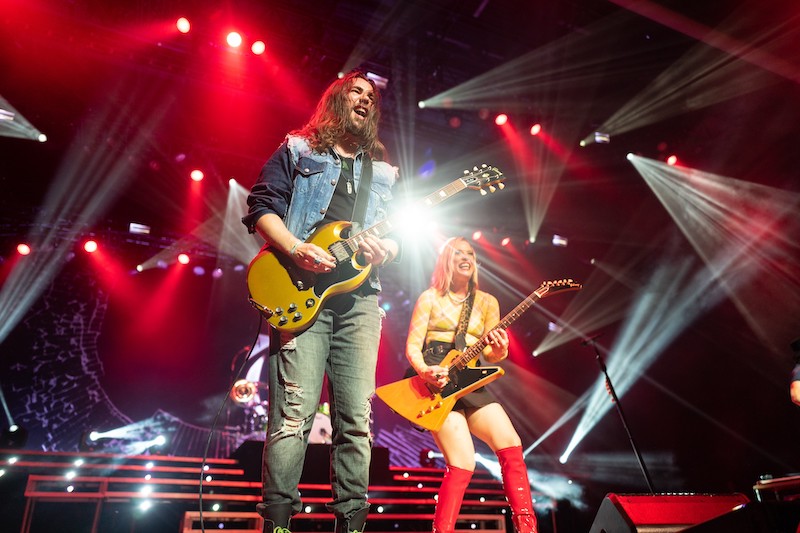 Sometimes you have to delve into the past to rediscover ideas that open the way to something sparkling and new. This well-known Nashville-based designer demonstrated that in colorful fashion this summer with his widely praised and much-talked about design for Grammy-winning rockers Halestorm on their 16-city summer tour.
Sometimes you have to delve into the past to rediscover ideas that open the way to something sparkling and new. This well-known Nashville-based designer demonstrated that in colorful fashion this summer with his widely praised and much-talked about design for Grammy-winning rockers Halestorm on their 16-city summer tour.
Always looking to add a new dimension to his rig, Richter set aside the big moving wash fixtures that he has used so effectively in recent tours, to go with a more retro-looking design that relied on color changes from static fixtures, a muti-tiered riser and distinctive light angles to create a what he calls “a dancing rig” on stage. Of course, although the look may have been old-school (he studied ‘80s and ‘90s music video when creating his design), the technology behind it was strictly 21st century. As a result, his show had the brightness, sharply focused angles, and color fades that modern audiences expect to find in a lightshow
However, creating this classic rig was not without its challenges. Richter’s LED pars had to fit on a lamp bar and clear the cords on the double hung PRT truss. He also had to ensure that the lights on his pre-rigged truss were kept in place, so his crew didn’t have to hang 40 fixtures every show.
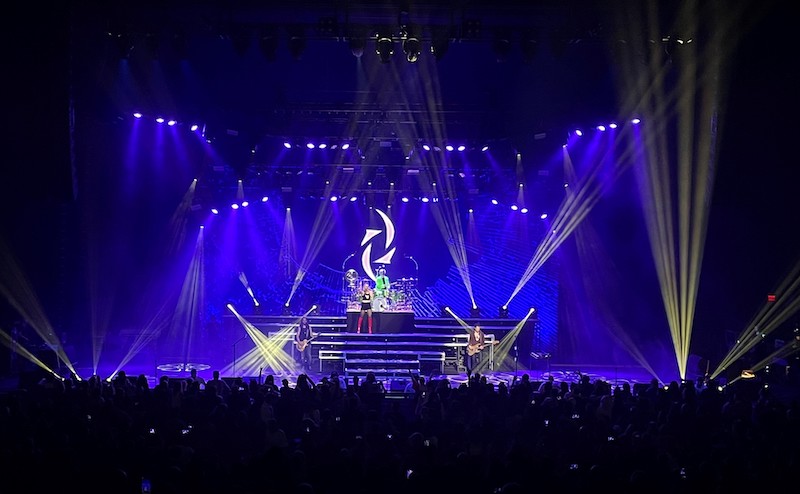
Talking to Richter, a friend mentioned that there was a good chance that some Halestorm fans under 30 would have never seen a par can system rig before this tour. Now, thanks to him, they’ve enjoyed this “new” experience. Here is how it all came together.
You’ve been lighting Halestorm for over six years, and you’re always trying to add a new dimension to their shows. One of the ways you made this year’s show different was by largely avoiding traditional moving wash fixtures. You’ve used those types of fixtures so well in the past. Why did you decide to skip them mostly this time?
“So, my main goal when coming up with a design is to make it look completely different from anything else out on the road. When it comes to moving head wash fixtures, although there are a lot of them on the market, they all have their own unique ‘trick’ that makes them stand out. For the most part, though, they are still just big circles of light that pixelate, zoom, and move around, which is great! I’m a big fan of many of those fixtures and will carry them again in the near future I’m sure when designing for this client. However, in this show, I really wanted to challenge myself to come up with unique looks that involved more lights. My vision was to create a show where people looked up and saw a bunch of lights everywhere rather than just eight to twelve moving wash per truss. It was something different.”
What did you replace the moving washes with?
“I went with static LED Par that had a front lens that was the same size as a PAR-64. The fixtures also have a glass front lens that is cut to give a beam angle that is very similar to what a narrow PAR-64 would be. It had to be powerful, be able to emulate a tungsten look of the traditional pars. If possible, I also wanted it to have something unique that it could do. It took some time to find the right fixture to my liking, but overall, I feel like it was the perfect fit for the job.”
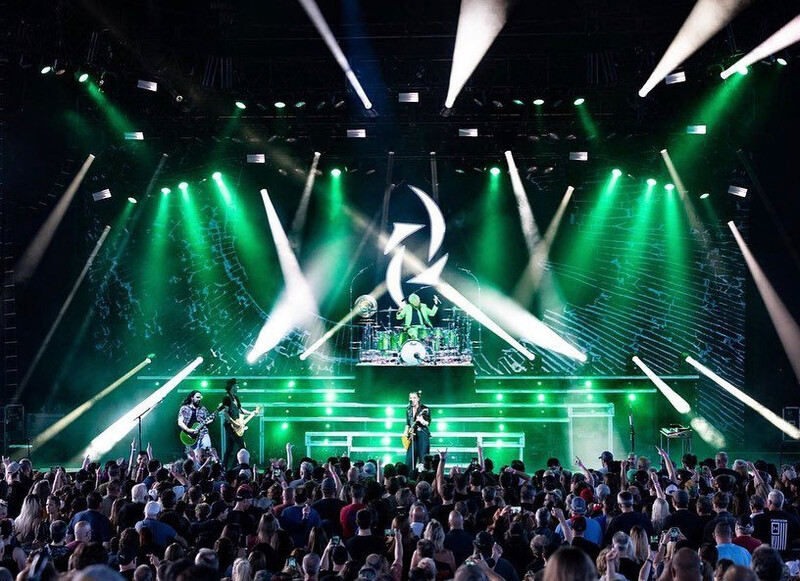
You said that you worried about “going out on a limb” by avoiding those traditional moving wash fixtures on this show. What were you worried about? What could have gone wrong?
“My main concern was really having enough light to cover the stage, I like having the stage saturated with color so no matter where the band goes, they can still be seen, even if they do not have a spot light on them. Also, maybe the idea just wouldn’t look right and the show would end up looking stagnant. To make matters even more uncertain, my vendor didn’t own the fixtures at the time, so I was making my decision based on two demo units shooting across a dark office onto a white wall.
“This meant there was no real way to know for sure what 60 of these fixtures spread out over three trusses at different heights would look like or cover. Lucky for me though the fixtures were plenty bright enough and it worked out perfectly.”
So, you went with an old school style par rig on this tour, but with modern fixtures. Can you elaborate on what you mean by that and why you did it?
Yes, so I had been talking to a friend about how much the industry standard has changed in such a short amount of time, like in the mid 2000’s a standard local plot was 120K par system with four ACL bars, six ellipsoidals, and four blinders – plus maybe six movers on T-Pipes, if there was room in the budget. Now, everything is moving lights hung on the center cord of a pre rig truss.
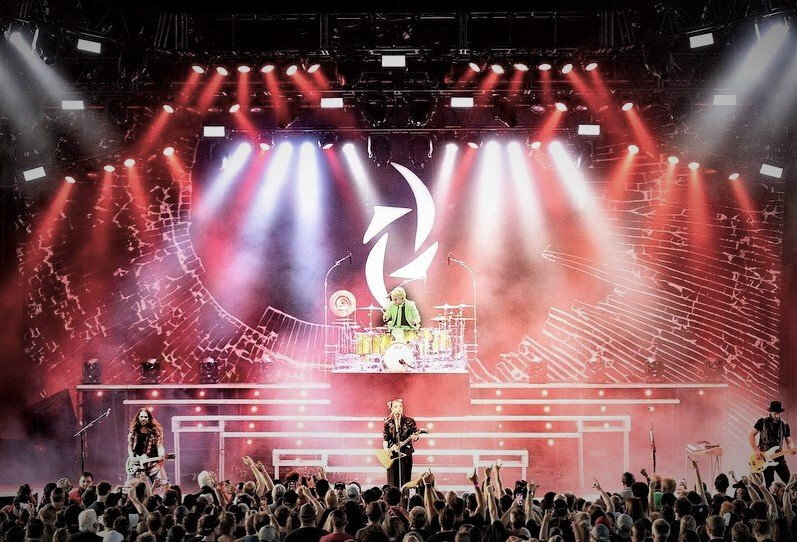
“So, while we were talking about it, my friend mentioned that there’d be a good chance that people 30 and younger would have never even seen a par can system before. He was right, I started thinking about it and realized I could go back to that style lighting but just bring it into the 2020’s. Most lighting venders still have a bunch of double hung lamp bar truss just sitting around their shops collecting dust, along with all the hinges, corner blocks, and all the adapters you could need.
“At that point, I started watching old ‘80s and ‘90s music videos and realized the lighting rigs they had looked massive but really weren’t made with a ton of stuff. They were just focused well and the layout of the truss made them look twice as big as they really were. So, I threw the idea by the band and they loved it, made up some renderings to show them and they were sold.
“I also really wanted to see if I could take an ‘out of date’ way of doing things and make it feel like a modern rock show, while still keeping the old school roots. It worked well but it came with its own challenges. The LED Par fixture had to be just the right size to fit on a lamp bar and clear the cords on the double hung PRT truss. I had to choose the right hard edge moving head to fit in the tech truss so that we can keep that pre rigged as well and not have to have the crew hang 40 fixtures every show. Using pre-rigged truss meant everything had to be bolted everyday instead of pinned like the newer truss systems. So, it was time consuming in its own way, but not so much that it was unreasonable to do.”
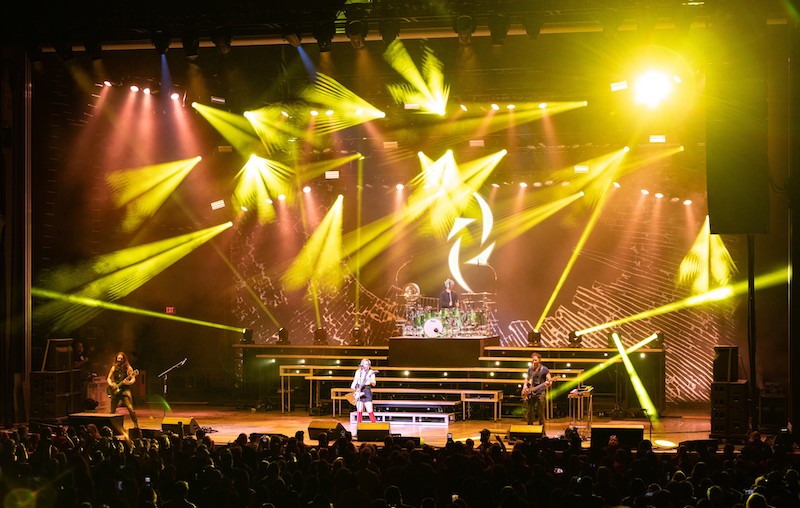
Well, the old-style par arrangement resulted in some really great looks! Another thing we really liked was how you had the art work imagery from the band’s LP appear as if it were breaking through your set’s backdrop. Can you explain how you did that?
“I didn’t want to just print the new album cover artwork as a backdrop, or have the band’s name across the whole stage, and I also felt like a video wall upstage was just not right for this band. So, I talked with the design team that did the artwork for their new album and got the images of broken glass that they used and found one that I thought would look good on the scale of a drape. I had a set piece made up in 2021 of their logo that hangs from the truss and lights up and pixelates and all that fun stuff, so it all kind of worked out to where it looked like it is breaking through the backdrop. That being said, however, I still had some other things I wanted to add to drive that image home, but we just ran out of time — so stay tuned for that next year!”
Why were the seven tapered steps that lead up to that backdrop in the set so important to your design?
“Simple, if you’re going to do an old school ‘80s style rig you have to have the set to match! I really wanted something that demanded attention, and had a stage presence that matched the band’s persona. It also gives them an area that they can walk around on and go somewhere on stage other than just back and forth across the front edge. I also really wanted to get my drummer up higher so that he was more easily seen, he is extremely talented and very animated when he plays. So, the steps also help the other members get up to his height and lock in with him, while not having him feel like he is disconnected from the rest of the band members.”
It was really impressive how you used color changes to create a genuine sense of motion in this design. Can you tell me about why you selected the colors you did?
I find that the band has a bunch of subtle builds and drops in their songs, they are noticeable in the music, but in my mind not enough to have a fixture move position or make a dramatic change in looks. So, I have found that if I just mess with the color saturation on the current color it adds enough of a change or makes things look as if they are moving but not in such a way that it takes away from the band’s performance. Also, with the layout of the static LED Par fixtures I don’t need to have all of them on at once to light the stage, So, I can simply fade in another group of pars and fade out he others and it creates a fully different look but with the same colors, so it gets a ‘dancing rig’ look, which at the end of the day captured the spirit of the show.”